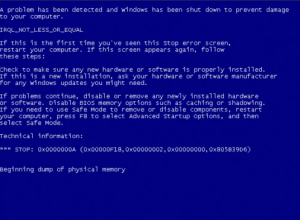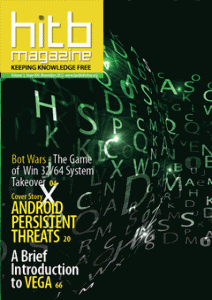Microsoft addressed several Windows kernel vulnerabilities in the MS12-075 security bulletin released in November this year, some of them residing in every version of the win32k.sys driver shipped with the NT family line systems. Apart from the obviously extremely interesting remote web browser => ring-0 arbitrary code execution issue, there have also been two other Local Privilege Escalation bugs, at least one of which was directly related to the management of legacy 16-bit applications running within a VDM (Virtual DOS Machine). Since the topics of use-after-free vulnerabilities in the Windows kernel – and especially in old and poorly understood functionality – seems to be very appealing for most, this post aims to cover some of the technical details related to that particular security flaw. In addition to (hopefully) having some didactic and entertainment value, this write-up and the very existence of that bug illustrates how trivial it still is to find elevation of privileges vulnerabilities in undocumented, rarely used features present in the Windows operating system since more than fifteen or twenty years by now. As a side note, a similar (yet unrelated) issue in the same code area has been previously found by Tarjei Mandt back in 2010 and documented in his excellent “CVE-2010-3941: Windows VDM Task Initialization Vulnerability” post over two years ago. There is also more evidence of Windows VDM and its kernel-mode support (WOW32) being subject of in-depth security research in the past: for example, see “Microsoft Windows NT #GP Trap Handler Allows Users to Switch Kernel Stack” (Pwnie Award Winner) or “EEYE: Windows VDM Zero Page Race Condition Privilege Escalation“.
The vulnerability
Some basic information regarding internal structures used by the WOW-related win32k.sys system calls has already been described by Tarjei in his article. In short, GUI threads can call a “public” win32k!xxxRegisterUserHungAppHandlers routine (being a part of the win32k!apfnSimpleCall interface) either through the win32k!NtUserCallTwoParam system call or user32!RegisterUserHungAppHandlers – a convenient user-mode wrapper. The service is purposed to be used within the NTVDM.EXE process, a container for 16-bit DOS apps. It is primarily responsible for allocating a WOWPROCESSINFO kernel structure, assigning it to an internal ppiCurrent->pwpi field within PROCESSINFO (corresponding to the current process) and inserting into a linked list pointed to by a global win32k!gpwpiFirstWow symbol as shown on the following listing:
 I hope you haven’t got bored with bypassing the Driver Signature Enforcement mechanism (present on all 64-bit Microsoft Windows operating systems since Vista) just yet – in either case, stay calm… this is going to be the last post of the series. After using multiple drivers shipped with the OS in the default configuration to
I hope you haven’t got bored with bypassing the Driver Signature Enforcement mechanism (present on all 64-bit Microsoft Windows operating systems since Vista) just yet – in either case, stay calm… this is going to be the last post of the series. After using multiple drivers shipped with the OS in the default configuration to 
 First of all, it has been reported to me that the system call list for Microsoft Windows Vista SP0 available at
First of all, it has been reported to me that the system call list for Microsoft Windows Vista SP0 available at